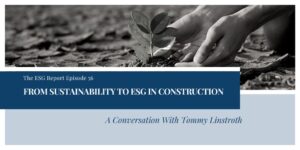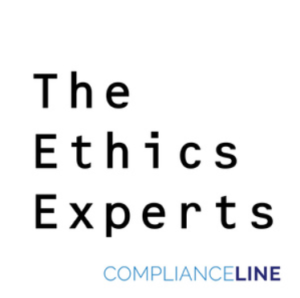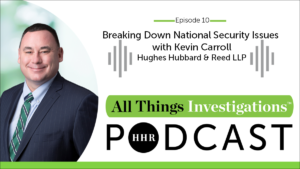
Tommy Linstroth is the founder and CEO of Green Badger, a SaaS company providing easy-to-use, collaborative cloud-based solutions to streamline and automate sustainability in the green building construction market. Tommy is a leader and pioneer in the ESG space and in this week’s episode, he and Tom Fox explore ESG in the green construction market.
Green Construction Within ESG
Tom asks Tommy how green construction fits into an overall ESG conversation. Tommy acknowledges that ESG is becoming more popular at the organizational, corporate and portfolio levels. Green building is part and parcel of the general ESG framework; companies are increasingly considering sustainability in the process of construction instead of only when the building is complete. Tom comments that this idea could expand from just a building to a community or gated subdivision. Tommy agrees and explains that if a developer is looking at multi-family developments, they should look at the collective impact that those have on not just the environment but the social and governmental aspects, as well.
The Origins of Green Badger
Green Badger was founded to solve the challenges Tommy faced managing green construction as a consultant. He would have to manage and track data from multiple projects, in different phases of construction. This was time-consuming, and he figured there had to be a way to automate the process to make it easier. With the extra time, they could make building projects greener, and finish them on time and within budget. Thus, the idea for Green Badger was born.
Green Certification
Tom asks Tommy to explain what is green certification. For buildings, there’s the primary or gold standard called LEED (Leadership in Energy and Environmental Design) certification, which is a third-party certification that is administered by the United States Green Building Control. It is used to verify the sustainability aspects of a building. About 95% of companies require it on their facilities moving forward and is used on almost everything that is publicly funded.
ESG Metrics
Tom asks Tommy about common ESG metrics in the construction phase. Tommy says that the most common metric is energy consumption; for example, fuel used on-site for equipment. You have to take into account all the direct and indirect emissions being produced, such as the carbon emissions produced while traveling to and from the job site. Measuring construction waste and water consumption is also a standard ESG metric. These metrics tend to focus more on the environmental and social aspects of ESG, rather than the governance side, he points out.
Looking Ahead
Tommy believes that there will be increased ESG requirements in new residential or commercial construction in 2025. He compares it to a running faucet: “Right now how we see the faucets on, and it’s just a trickle. Those financial owner-driven regulations – they’re slowly lifting that lever where the drop is going to turn into a trickle, and then it’s going to turn into a blast.” In the 80s and 90s safety regulations were not that prevalent, but these days they are ingrained into the culture of every work site. “ESG will become baked in as a standard operating procedure”.
Resources
Tommy Linstroth | LinkedIn | Twitter | Instagram
Green Badger | Website | LinkedIn | Twitter





